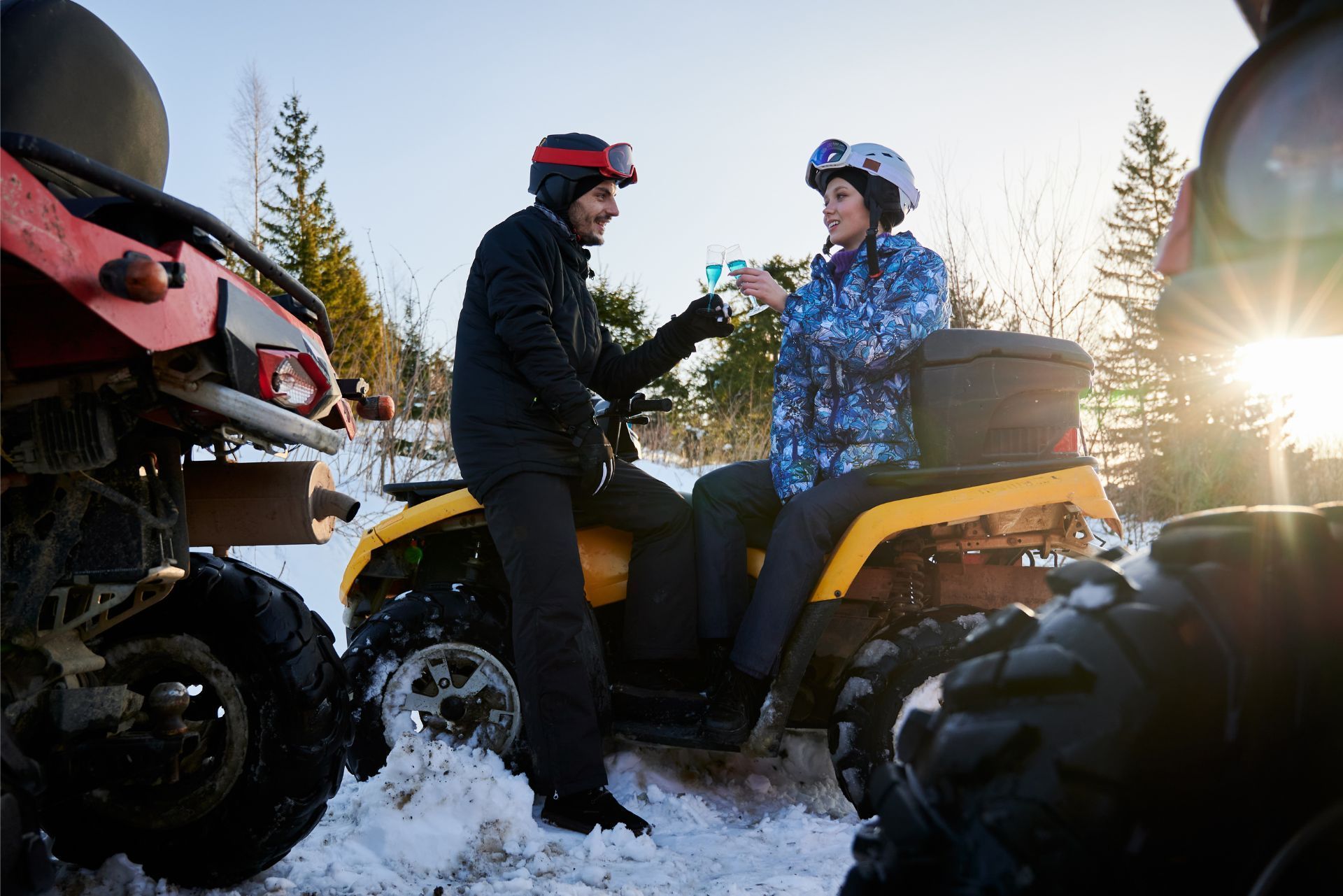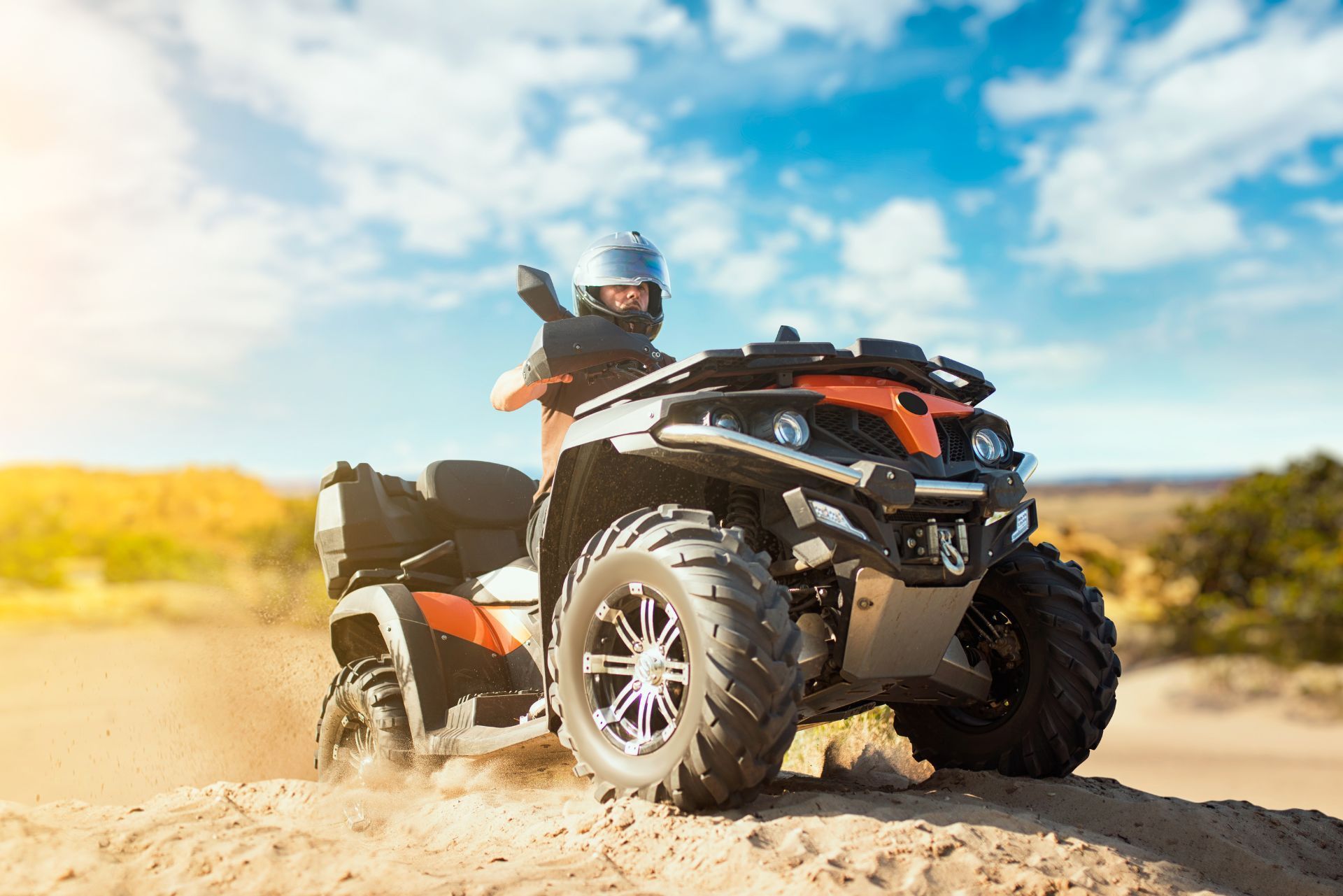Top 3 Recommended Policies

All-terrain vehicles (ATVs) are a popular choice for outdoor enthusiasts in New York, offering thrilling experiences across diverse terrains. However, with the excitement of riding comes the responsibility of ensuring that you are adequately protected. ATV insurance is essential for safeguarding both the rider and the vehicle. This article delves into everything you need to know about ATV insurance in New York, including its importance, coverage options, and legal requirements.
Understanding ATV Insurance
ATV insurance is specifically designed to protect riders against financial losses arising from accidents, theft, and other unforeseen incidents. Just like car insurance, ATV insurance provides coverage for damages to the vehicle, liability for injuries to other parties, and medical expenses. Understanding the nuances of ATV insurance can help riders make informed decisions about their coverage. Riders should also consider the different types of coverage available, such as comprehensive and collision coverage, which can provide additional layers of protection. Comprehensive coverage typically protects against non-collision-related incidents, such as theft, vandalism, or natural disasters, while collision coverage helps cover damages resulting from accidents, regardless of fault.
Why Is ATV Insurance Important?
In New York, ATV insurance is not just a good idea; it is a legal requirement for certain situations. Riding without insurance can lead to significant financial repercussions, including hefty fines and out-of-pocket expenses in the event of an accident. Moreover, insurance provides peace of mind, allowing riders to enjoy their adventures without the constant worry of potential financial burdens. The thrill of exploring rugged terrains and scenic trails can be exhilarating, but it also comes with inherent risks. Having adequate insurance means that riders can focus on the joy of their ride rather than the potential consequences of an accident.
Additionally, ATV insurance can cover damages that occur not only on public roads but also on private properties, which is crucial for those who enjoy off-road riding. This coverage is vital for protecting your investment in the vehicle and ensuring that you can recover from any unfortunate incidents. Furthermore, many insurance policies offer additional benefits, such as roadside assistance and coverage for accessories or modifications made to the ATV, which can enhance the overall riding experience and provide added security for riders who customize their vehicles.
Legal Requirements for ATV Insurance in New York
New York state law mandates that all ATVs registered for use on public lands must carry liability insurance. This insurance must meet specific minimum coverage limits, including bodily injury and property damage liability. Failure to comply with these regulations can result in penalties, including fines and the suspension of your ATV registration. It's important to note that while liability insurance is mandatory, riders may also want to consider additional coverage options to ensure they are fully protected in various situations.
It is essential to stay informed about the legal requirements, as they can change. Riders should regularly check with the New York State
Department of Motor Vehicles (DMV) for the latest regulations regarding ATV insurance and registration. Additionally, understanding the nuances of your specific policy can help you navigate the complexities of coverage options, such as uninsured or underinsured motorist protection, which can be particularly beneficial in the event of an accident involving another rider who lacks sufficient insurance. By staying informed and proactive, riders can ensure they are adequately protected while enjoying their ATV adventures across New York's diverse landscapes.

Types of Coverage Available
ATV insurance policies can vary widely in terms of coverage options. Understanding the different types of coverage available can help riders choose a policy that best suits their needs. Here are the most common types of coverage to consider:
Liability Coverage
Liability coverage is the foundation of any ATV insurance policy. It protects the policyholder from financial loss if they are found responsible for causing injury or property damage to another person. In New York, the minimum liability coverage required includes:
Bodily injury liability: Covers medical expenses for injuries sustained by others in an accident.
Property damage liability: Covers damages to someone else's property resulting from an accident.
While the state mandates minimum coverage, many riders opt for higher limits to ensure adequate protection against potential lawsuits and claims. This is especially important in high-traffic areas or during events where multiple riders are present, as the likelihood of accidents increases significantly. Additionally, some policies may offer coverage for legal fees associated with defending against claims, providing an extra layer of security for the policyholder.
Collision Coverage
Collision coverage helps pay for damages to your ATV resulting from a collision with another vehicle or object, regardless of who is at fault. This type of coverage is particularly useful for riders who frequently use their ATVs in rugged terrains where accidents can occur more easily. It ensures that you can repair or replace your ATV without incurring significant out-of-pocket expenses. Riders should also consider the deductible associated with collision coverage, as this can impact the overall cost of repairs. A higher deductible might lower your premium but could lead to larger expenses in the event of an accident.
Comprehensive Coverage
Comprehensive coverage protects against non-collision-related incidents, such as theft, vandalism, fire, or natural disasters. This type of coverage is essential for riders who store their ATVs outside or in less secure locations. It provides peace of mind that your investment is protected against various risks. Moreover, comprehensive coverage often includes provisions for damage caused by falling objects or animal strikes, which can be particularly relevant for those who ride in rural or wooded areas. Riders should review the specific exclusions and limitations of their comprehensive coverage to ensure they are fully aware of what is and isn’t covered, allowing them to make informed decisions about additional protective measures they may want to take.
Factors Affecting ATV Insurance Premiums
When determining the cost of ATV insurance, several factors come into play. Understanding these factors can help riders find the best rates and coverage for their needs.
Type of ATV
The make and model of the ATV can significantly influence insurance premiums. High-performance or luxury models typically come with higher premiums due to their increased value and the potential costs associated with repairs. Conversely, older or less powerful models may attract lower rates. Additionally, certain brands may have a reputation for reliability and safety, which can also affect pricing. Riders should consider the long-term value of their ATV, as investing in a model known for durability may lead to lower insurance costs over time.
Rider Experience
The experience level of the rider also plays a crucial role in determining insurance costs. Newer riders or those with a history of accidents may face higher premiums compared to more experienced riders with clean driving records. Insurance companies often assess the risk associated with the rider's history to set appropriate rates. Furthermore, completing safety courses or training programs can sometimes lead to discounts on premiums, as insurers recognize the commitment to safe riding practices. This not only benefits the rider financially but also promotes a culture of safety within the ATV community.
Usage of the ATV
How often and where the ATV is used can impact insurance rates. Riders who frequently use their ATVs on public roads or in competitive events may face higher premiums due to increased risk. On the other hand, those who use their ATVs primarily for recreational purposes in controlled environments may benefit from lower rates. Additionally, the geographical location of the rider can play a significant role; areas with higher traffic or accident rates may lead to increased premiums. Riders should also consider how seasonal usage affects their insurance needs, as some may only ride during certain months, potentially allowing for temporary coverage options that could save money.
How to Choose the Right ATV Insurance Policy
Choosing the right ATV insurance policy can be daunting, but a few key steps can simplify the process. Here are some tips to consider when selecting a policy:
Assess Your Needs
Before shopping for insurance, it's essential to assess your specific needs. Consider factors such as the value of your ATV, how often you ride, and the types of coverage that are most important to you. This assessment will help narrow down your options and ensure you select a policy that meets your requirements. Additionally, think about where you typically ride—whether it's on public trails, private property, or in competitive events—as this can influence the type of coverage you need. For instance, if you frequently ride in rugged terrains, you might want to consider policies that cover damage from accidents or natural disasters.
Compare Quotes
Obtaining quotes from multiple insurance providers is crucial for finding the best rates. Each company may offer different pricing structures and coverage options, so comparing quotes can help identify the most cost-effective policy. Be sure to consider not only the premium but also the coverage limits and deductibles. Furthermore, look for discounts that may be available, such as those for bundling policies or for being a member of certain ATV clubs. Some insurers might also offer lower rates for safety training courses, which can be a great way to save money while ensuring you’re well-prepared for your rides.
Read Reviews and Ratings
Researching insurance companies can provide valuable insights into their reputation and customer service. Reading reviews and ratings from other ATV owners can help gauge the reliability of the insurer, making it easier to choose a company that offers excellent service and support. Pay attention to feedback regarding claims processing, as this is often a critical aspect of insurance that can significantly affect your experience. Additionally, consider reaching out to fellow ATV enthusiasts or local riding groups for recommendations, as they may have firsthand experience with various insurers and can offer insights that online reviews may not capture.

Common Exclusions in ATV Insurance Policies
While ATV insurance provides essential coverage, it is crucial to understand the exclusions that may apply. Being aware of these exclusions can help riders avoid surprises when filing a claim.
Negligence and Reckless Driving
Most insurance policies will not cover damages resulting from negligent or reckless driving. This includes operating the ATV under the influence of alcohol or drugs, exceeding speed limits, or ignoring safety regulations. Riders must adhere to safe driving practices to ensure their coverage remains valid. Furthermore, engaging in risky behaviors such as performing stunts or driving without appropriate safety gear can also void coverage. Insurers often emphasize the importance of following local laws and regulations, as failure to do so not only jeopardizes insurance claims but can also lead to legal repercussions.
Racing and Competitive Events
Many standard ATV insurance policies exclude coverage for accidents that occur during racing or competitive events. Riders who participate in such activities may need to purchase specialized insurance tailored for racing to ensure they are adequately protected. This specialized coverage typically includes higher liability limits and may cover additional risks associated with high-speed riding. Riders should also consider that even practice sessions for competitive events may fall under these exclusions, making it vital to clarify coverage details with their insurance provider before participating in any racing activities.
Unregistered ATVs
ATVs that are not registered with the state may not be eligible for insurance coverage. It is essential to ensure that your ATV is properly registered and meets all legal requirements before seeking insurance. Riding an unregistered ATV can lead to fines and complications in the event of an accident. Additionally, many states have specific regulations regarding the operation of ATVs on public lands or trails, which often require registration. Riders should familiarize themselves with local laws to avoid potential legal issues and ensure they can enjoy their off-road adventures without unnecessary risks.
Modifications and Customizations
Another common exclusion in ATV insurance policies pertains to modifications and customizations made to the vehicle. While many riders enjoy personalizing their ATVs with aftermarket parts or enhancements, these modifications can sometimes void insurance coverage if they are not reported to the insurer. For instance, installing performance-enhancing modifications or altering the ATV's structure can lead to increased risk, which insurers may not cover. It is advisable for riders to consult with their insurance provider before making significant changes to their ATVs to ensure that they maintain adequate coverage and avoid any unexpected liabilities.
Use for Business Purposes
ATV insurance policies often exclude coverage for vehicles used for business purposes, such as commercial tours or rental services. If an ATV is utilized in a business capacity, riders may need to secure a commercial insurance policy that specifically addresses the unique risks associated with business use. This distinction is crucial, as personal insurance typically does not extend to business-related activities, leaving riders vulnerable in the event of an accident while using their ATV for work. Understanding these nuances can help riders make informed decisions about their insurance needs and ensure they are adequately protected in all scenarios.
Tips for Reducing ATV Insurance Costs
Bundle Policies
Many insurance companies offer discounts for bundling multiple policies, such as ATV insurance with auto or home insurance. By consolidating your insurance needs with one provider, you can often secure lower rates and simplify your billing process.
Take a Safety Course
Completing an ATV safety course can not only enhance your riding skills but may also qualify you for discounts on your insurance premiums. Many insurers recognize the value of training and offer lower rates to riders who demonstrate a commitment to safety.
Increase Your Deductible
Raising your deductible can lead to lower monthly premiums. However, it is essential to choose a deductible that you can comfortably afford in the event of a claim. Weigh the paotential savings against the financial risk before making this decision.
Filing an ATV Insurance Claim
In the unfortunate event of an accident or loss, knowing how to file an ATV insurance claim can streamline the process and ensure that you receive the compensation you deserve. Here are the steps to follow:
Notify Your Insurance Provider
As soon as an incident occurs, contact your insurance provider to report the claim. Most companies have a dedicated claims department that can guide you through the process. Provide all necessary information, including details of the incident, any witnesses, and photographs if available.
Document the Incident
Thorough documentation is crucial when filing a claim. Gather evidence such as photographs of the accident scene, damage to the ATV, and any relevant police reports. This information will help support your claim and expedite the processing time.
Follow Up
After filing the claim, maintain communication with your insurance provider to stay updated on the status of your claim. If additional information is required, be prompt in providing it to avoid delays in processing.
Conclusion
CATV insurance is an essential aspect of responsible riding in New York. Understanding the different types of coverage, legal requirements, and factors affecting premiums can help riders make informed decisions. By choosing the right policy and adhering to safe riding practices, ATV enthusiasts can enjoy their adventures with peace of mind, knowing they are adequately protected. Whether you are a seasoned rider or just starting, investing in ATV insurance is a smart move that ensures safety and security on the trails.
Contact Us
Phone
Location

